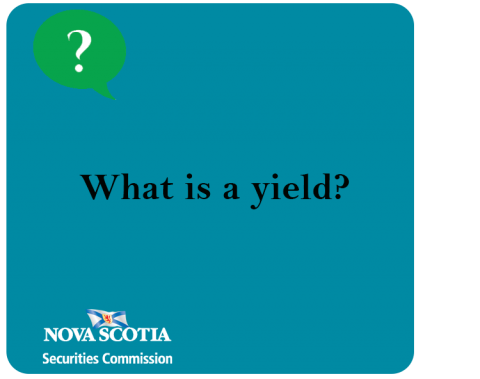Submitted by nsscadmin on

A yield is the income return on an investment. This could include interest or dividends you receive for holding a security. In reports on a stock or a bond you’ll typically find the yield expressed as an annual percentage. This is based on the investment’s cost and current market value.
Here’s another way to calculate the simple yield of an investment. Take the income of the investment and divide it by its price or cost. For example, we have an investment with a cost of $75 which pays an annual income of $3. That would calculate out to 3 / 75 = 0.04 or as expressed as a yield, 4%.
When you are looking at the performance of a stock or bond, or the current valuation, you will usually find its yield listed. Again, this will be listed as a percentage. In some instances, the yield displayed will be the yield the investment paid the previous year, or it could be an anticipated yield with its expected yield for the current year. These anticipated yields are not guaranteed and may not pan out at the end of the year. Make sure you know what kind of yield you’re looking at when researching an investment.
